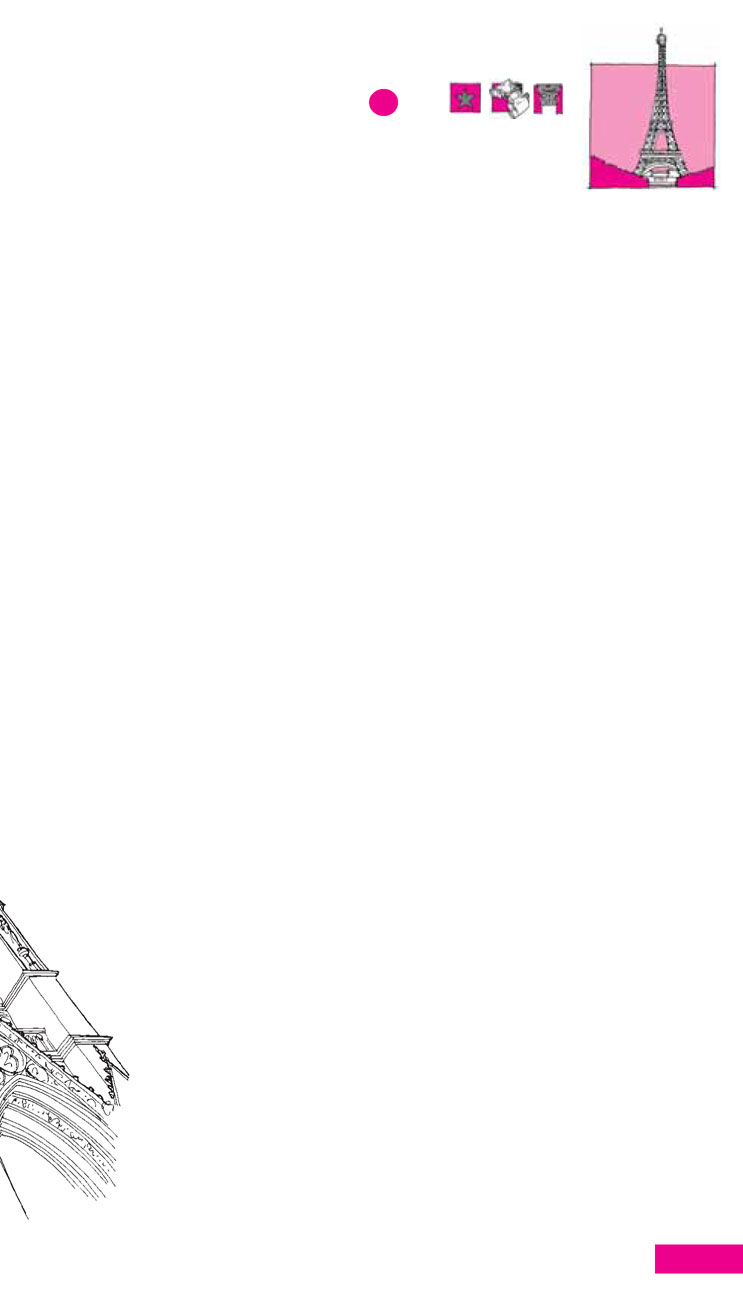6
Return to rue de Grenelle and turn right. The Hôtel des Invalides will be on your left, centred on the great axis leading to the river. The restrained Neoclassical façade of this building is one of the most impressive sights in Paris, particularly when seen from Pont Alexandre III. It was founded
as a military hospital and retirement home for French veterans by Louis XIV in 1670. Until then soldiers who had been disabled by war had to beg on the street. The building is still a veterans’ hospital today.
Construction lasted five years, and was based on designs by Libéral Bruand. The complex houses a number of military museums, with the south side of it abutting St-Louis-des- Invalides, the soldiers’ church, which backs onto the magnificent Dôme. The Cour d’Honneur is still used for military parades, and there is a statue of Napoleon by Seurre on its south side. The formal tree-lined gardens, which stretch all the way down to the Seine, were laid out by de Cotte in 1704 and are lined with bronze cannons dating from the 17th and 18th centuries.
The entrance to the Musée de l’Ordre de la Libération is at No. 51 bis Boulevard de la Tour-Maubourg. This museum highlights the struggle of the Free French during World War II, who resisted and eventually managed to overthrow the Germans occupying their country. The Order of Liberation was created by General Charles de Gaulle in 1940 and bestowed on anyone who had made an outstanding contribution towards that final victory. It is France’s highest honour and was given to members of the French armed forces, civilians, as well as a number of important allies, including King George VI, Winston Churchill and General Eisenhower.
The Musée de l’Armée is one of the most comprehensive museums of military history in the world. Its exhibits include Stone Age weapons as well as those used in World War II. It is also home to the third-largest collection of armour in the world. The Ancient Armoury is located in the old refectory and is full of interesting displays. It also boasts some 17th-century murals which, thanks to a recent restoration, are visible for the first time in two centuries. Painted by Joseph Parrocel, they celebrate a number of Louis XIV’s military victories. The Cour de Valeur contains an educational display highlighting the life of General de Gaulle.
The Musée des Plans-Reliefs is home to detailed models of French
fortifications, some of which date back to the reign of Louis XIV. The
oldest is that of the fortified town of Perpignan, which is from 1686.
This was designed by the famous 17th-century military architect and engineer Sébastien Le Prestre de Vauban, who was responsible for many of the defences around French towns, including Briançon. The museum also contains a display on model-making.
The chapel of St-Louis-des- Invalides, also known as the soldiers’ church, was built by Jules Hardouin-Mansart between 1679 and 1708. It was based on an original design by Libéral Bruand. This stark interior is
Invalides
145

